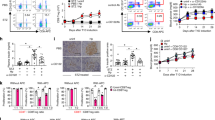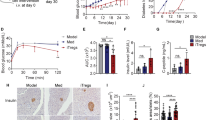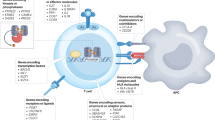Abstract
STREPTOZOTOCIN (SZ) is a broad-spectrum antibiotic with oncolytic, oncogenic and diabetogenic properties1–4. To produce diabetes in experimental animals, SZ is administered as a single bolus, injected either intravenously (i.v.) or intraperitoneally (i.p.). Within 72 h, selective destruction of pancreatic beta cells and hyperglycaemia occur3,5. Subdiabetogenic doses of SZ cause only mild degranulation of the β-cells without hyperglycaemia during the first 72 h, unlike multiple (five) subdiabetogenic (i.v. or i.p.) doses of SZ to Charles River Laboratory (CD-1) mice, which produce marked glucose elevations within 5–6 days of the last injection of SZ, associated with morphological evidence of insulitis6,7. To dissociate direct β-cell toxicity of SZ from the delayed appearance of the insulitis and hyperglycaemia, we used antilymphocyte serum and 3-O-methyl-D-glucose (3-OMG), a nonmetabolised glucose analogue, which prevents the occurrence of hyperglycaemia for at least 72 h, when administered to mice or rats prior to a single diabetogenic dose of SZ8,9. Antilymphocyte serum (ALS), while not altering the multiple subdiabetogenic SZ-induced hyperglycaemia, does protect against the lymphocytic infiltration of the pancreatic islets, without changing the delayed hyperglycaemic response observed following the combination of 3-OMG and SZ injections10. We report here that injections of ALS (for 5 weeks), in combination with a regimen of 3-OMG and SZ, prevented the development of hyperglycaemia for the entire 14 weeks of the experiment, and that mice demonstrated essentially normal intraperitoneal glucose tolerance tests and pancreatic histology during the 3rd and 4th months following SZ.
This is a preview of subscription content, access via your institution
Access options
Subscribe to this journal
Receive 51 print issues and online access
$199.00 per year
only $3.90 per issue
Buy this article
- Purchase on Springer Link
- Instant access to full article PDF
Prices may be subject to local taxes which are calculated during checkout
Similar content being viewed by others
References
Herr, R. R., Eble, T. E., Bergy, M. E. & Jahnke, H.K. Centibiot. Ann. 23, 6–240 (1959–60).
Evans, J. S., Gerittsen, G. C., Mann, K. M. & Owen, S. P. Cancer chemother. Rep. 48, 1–6 (1965).
Rakietan, N., Rakietan, M. L. & Nadkarni, M. R. Cancer Chemother. Rep. 29, 91–98 (1963).
Rakietan, N., Gordon, B. S., Beaty, A., Cooney, D. A. & Schein, P. S. Proc. Soc. exp. Biol. Med. 151, 356–361 (1976).
Rerup, C. C. Pharmac. Rev. 22, 485–518 (1970).
Like, A. A. & Rossini, A. A. Science 193, 415–417 (1976).
Like, A. A., Appel, M. C., Williams, R. M. & Rossini, A. A. Lab. Invest. 38, 470–486 (1978).
Wick, M. M., Rossini, A. A. & Glynn, D. Cancer Res. 37, 3901–3903 (1977).
Ganda, O. P., Rossini, A. A. & Like, A. A. Diabetes 25, 595–603 (1976).
Rossini, A. A., Like, A. A., Chick, W. L., Appel, M. C. & Cahill, G. F., Jr Proc. natn. Acad. Sci. U.S.A. 74, 2485–2489 (1977).
Author information
Authors and Affiliations
Rights and permissions
About this article
Cite this article
ROSSINI, A., WILLIAMS, R., APPEL, M. et al. Complete protection from low-dose streptozotocin-induced diabetes in mice. Nature 276, 182–184 (1978). https://doi.org/10.1038/276182a0
Received:
Accepted:
Issue Date:
DOI: https://doi.org/10.1038/276182a0
Comments
By submitting a comment you agree to abide by our Terms and Community Guidelines. If you find something abusive or that does not comply with our terms or guidelines please flag it as inappropriate.



